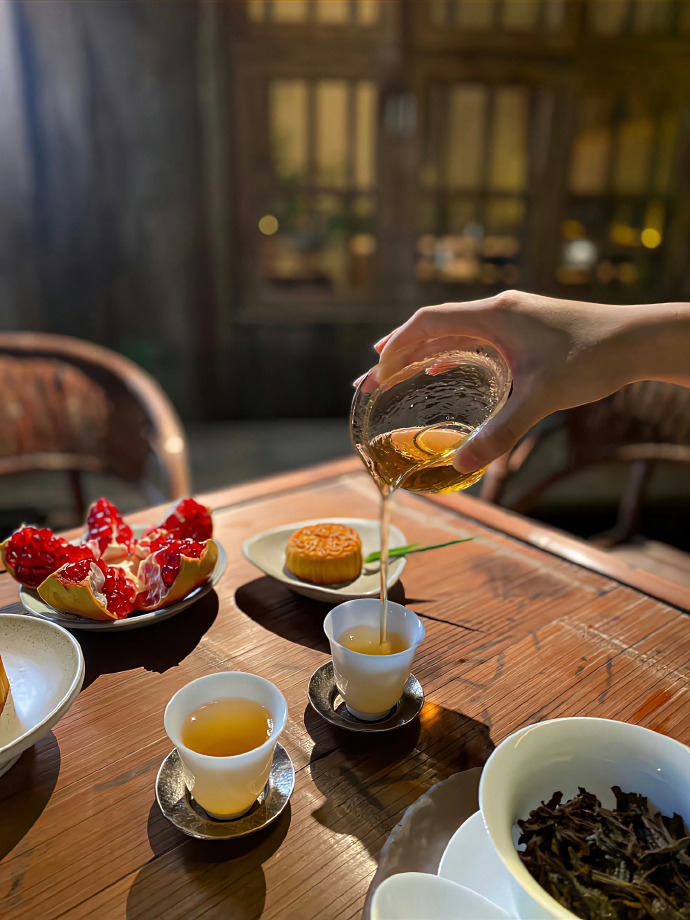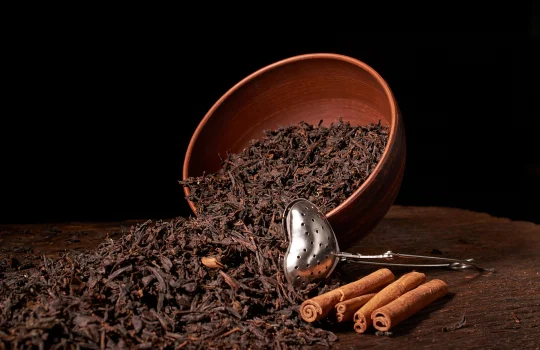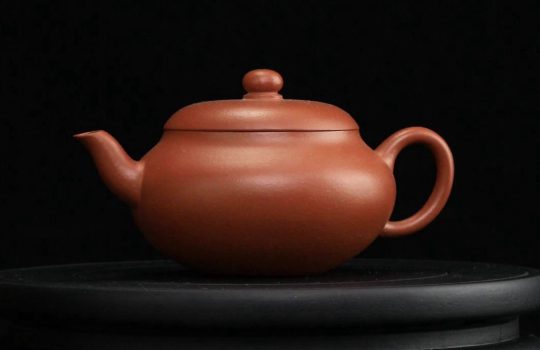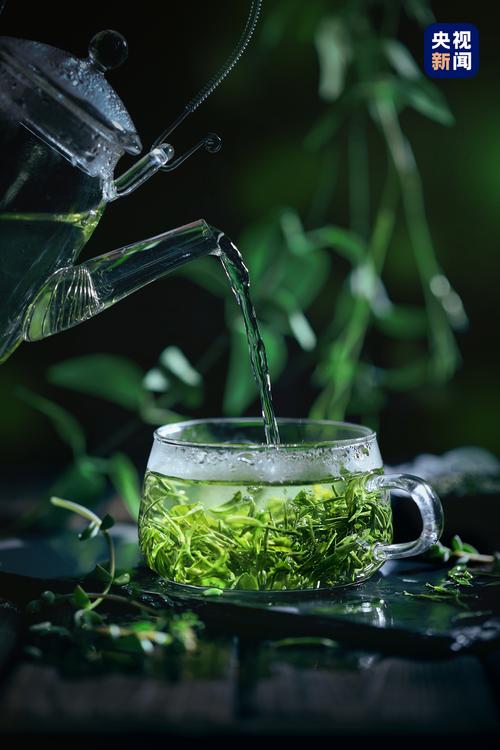Tea, the legend of a leaf. It carries a thousand years of culture and exudes a unique charm. Whether in a quiet afternoon, or in the busy life, a cup of tea can always bring us a moment of peace and comfort. Today, let’s walk into the world of tea and enjoy its endless charm.
Tea Culture
Tea, as an important part of traditional Chinese culture, has a long history and deep heritage. Since Shennong tasted all kinds of herbs, tea has begun to enter people’s lives. From the decoction of tea in the Tang Dynasty to the ordering of tea in the Song Dynasty to the brewing of tea in the Ming and Qing Dynasties, tea culture has been evolving and developing in the long river of history.
Tea is not only a kind of drink, but also an attitude towards life. In the pen of the literati, tea is “fragrant leaves, tender buds. The poetic poet, love the monks‘; in the heart of the Zen master, tea is ’Zen tea a flavour‘ of enlightenment; in the people’s life, tea is ’firewood, rice, oil, salt, soy, vinegar and tea” of daily life. Tea, with its unique charm, has been integrated into people’s lives and become a spiritual symbol of Chinese culture.
Benefits of drinking tea
Drinking tea has many benefits for the body. Tea is rich in tea polyphenols, caffeine, amino acids and other components, with antioxidant, refreshing, digestive and other effects.
Antioxidant: Tea polyphenol is a natural antioxidant that can remove free radicals from the body, slow down cell aging and prevent various chronic diseases.
Refreshing: Caffeine can stimulate the central nervous system, improve concentration and thinking ability, and keep people awake.
Digestive aid: The caffeine and tea polyphenols in tea can promote gastric juice secretion, help digest food and relieve stomach discomfort.
In addition, drinking tea can also reduce the risk of dental caries, diabetes, obesity and other diseases. However, it should be noted that, although drinking tea is good, but also can not be excessive consumption, so as not to cause adverse effects on the body.
Characteristics of tea
Diversity: There are many types of tea, green tea, black tea, oolong tea, black tea, white tea and so on. Different kinds of tea have different characteristics and flavours.
Geography: the origin of tea is different, its quality and flavour will also be different. For example, West Lake Longjing is produced in Hangzhou, Zhejiang Province, with the characteristics of ‘green colour, lush fragrance, sweet taste and beautiful shape’; Anxi Tieguanyin is produced in Anxi, Fujian Province, with the unique flavour of ‘Guanyin rhyme’.
Seasonality: The quality of tea leaves picked in different seasons may vary. Generally speaking, spring tea is the best quality, autumn tea is second, summer tea is worse.
Fourth, the varieties of tea
Green tea: green tea is unfermented tea, with the characteristics of clear soup and green leaves. Its representative varieties are Xihu Longjing, Biluochun, Huangshan Maofeng and so on.
Black tea: black tea is fully fermented tea, with red soup and red leaves. Its representative varieties are Keemun Red Tea, Zhengshan Xiaojiao, Jinjunmei and so on.
Oolong tea: Oolong tea is semi-fermented tea, with green leaves and red edging characteristics. Its representative varieties are Iron Goddess of Mercy, Dahongpao, Narcissus and so on.
Black tea: black tea is a post-fermented tea, with the characteristics of aged aroma and mellow. Its representative varieties are Pu’er tea, Anhua black tea, six fortress tea, etc..
White Tea: White tea is slightly fermented tea, with the characteristics of fresh fragrance. Its representative varieties include White Hair Silver Needle, White Peony, Shou Mei and so on.
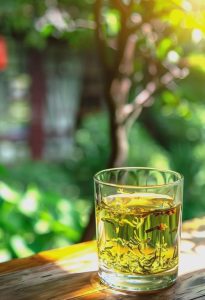
Origin of Tea
China is the hometown of tea and has many tea origins. Tea from different origins has different qualities and flavours due to climate, soil, altitude and other factors.
Zhejiang: Zhejiang is one of the important tea producing areas in China, mainly producing green tea and black tea. Among them, West Lake Longjing, Anji White Tea and Jiuqu Red Plum are the famous teas of Zhejiang.
Fujian: Fujian is the birthplace of Chinese oolong tea and black tea, mainly producing famous teas such as Iron Goddess of Mercy, Dahongpao, Zhengshan Xiaojiao, and Jinjunmei.
Yunnan: Yunnan is the main production area of China’s Puerh Tea, in addition, it also produces Dian Hong, Moonlight White and other famous teas.
Anhui: Anhui is an important green tea producing area in China, mainly producing famous teas such as Huangshan Maofeng, Taiping Houkui and Liu’an Gua Pian.
Hunan: Hunan mainly produces black tea and black tea, among which, Anhua black tea and Junshan silver needle are famous teas in Hunan.
Production Process
The production process varies from one type of tea to another. Generally speaking, the production process of tea includes picking, withering, greening, kneading, fermentation, drying and so on.
Green Tea: The production process of green tea mainly includes greening, kneading and drying. Killing is the key link in the production of green tea, destroying the enzyme activity in the tea leaves through high temperature and preventing the fermentation of tea leaves. Kneading is to make the tea leaves form a certain shape, and at the same time destroy the tea cells to release the aroma of the tea. Drying is to remove the water in the tea leaves and improve the preservation of the tea leaves.
Black Tea: The production process of black tea mainly includes withering, kneading, fermentation and drying. Withering is to make the water in the tea leaves evenly distributed, and at the same time promote the enzyme activity in the tea leaves. Kneading is to make the tea leaves form a certain shape, and at the same time, destroy the cells of the tea leaves to release the aroma of the tea leaves. Fermentation is a key part of black tea production, where the enzymes in the tea leaves react with the oxygen in the air to turn the tea leaves red. Drying is done to remove water from the tea leaves to improve their shelf life.
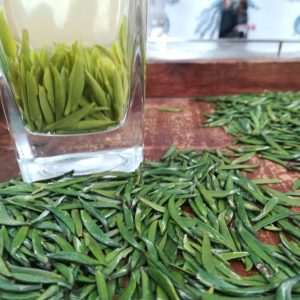
Oolong Tea: The production process of Oolong tea mainly includes withering, shaking, killing, kneading and drying. Withering is to make the water in the tea leaves evenly distributed, and at the same time promote the enzyme activity in the tea leaves. Shaking is a unique part of oolong tea production, by shaking the tea leaves, the edges of the tea leaves are damaged by friction, which promotes the fermentation of the tea leaves. Killing is to stop the fermentation of the tea leaves and prevent them from spoiling. Kneading is to make the tea leaves form a certain shape, and at the same time destroy the cells of the tea leaves to release the aroma of the tea leaves. Drying is to remove the water in the tea leaves and improve the preservation of the tea leaves.
Black Tea: The production process of black tea mainly includes greening, kneading, curing and drying. Killing is to destroy the enzyme activity in the tea leaves to prevent fermentation. Kneading is to make the tea leaves form a certain shape, and at the same time, destroy the cells of the tea leaves to release the aroma of the tea leaves. Worsting is a key part of black tea production, by piling up the tea leaves together, under certain temperature and humidity conditions, to make the tea leaves undergo fermentation. Drying is to remove the water in the tea leaves and improve the preservation of the tea leaves.
White Tea: The production process of white tea mainly includes withering and drying. Withering is to make the water in the tea leaves evenly distributed, and at the same time promote the enzyme activity in the tea leaves. Drying is to remove the water in the tea leaves and improve the preservation of tea leaves.
Tea quality
The quality of tea mainly depends on the appearance, aroma, soup colour, taste, leaf bottom and other aspects.
Shape: Good tea leaves have neat shape, bright colour and no impurity.
Aroma: Good tea leaves have high and persistent aroma without any odour.
Soup colour: good tea leaves have clear and bright soup colour, no turbidity.
Taste: good tea leaves have mellow taste, long-lasting sweetness, no bitter and astringent flavour.
Leaf Bottom: Good tea leaves have soft bottom, even colour and no impurity.
Taste Description
Green Tea: Green tea is fresh and crisp, with light floral and fruity aroma. Slightly bitter in the mouth, with a quick sweetness, making people savour the taste.
Black Tea: Black Tea has a mellow and sweet taste, with strong fruity and floral aroma. It is smooth in the mouth with a long-lasting sweet aftertaste, giving people a warm feeling.
Oolong Tea: Oolong tea has a mellow and sweet taste with unique floral and fruity aroma. There is a certain bitterness in the mouth, but it will soon be transformed into sweetness, making people intoxicated.
Black Tea: Black Tea has a mellow and aged flavour, with a unique aged and woody aroma. It is smooth in the mouth with a long-lasting sweet aftertaste, giving people a sense of calmness.
White Tea: White tea is light and sweet, with light floral and fruity flavour. It is soft in the mouth with a quick sweet aftertaste, giving people a feeling of freshness of nature.
Appearance of Tea
The appearance of different types of tea varies.
Green Tea: The appearance of green tea is usually green in colour, with flat, curly and needle-like shapes.
Black Tea: Black tea is usually black or reddish-brown in colour, and is shaped like strips or granules.
Oolong Tea: Oolong tea is usually green or brown in colour, curly and granular in shape.
Black Tea: The appearance of black tea is usually black or brown, and the shape is lumpy, cake-like and so on.
White Tea: White tea is usually white or greyish white in appearance, with the shape of buds, leaves and so on.
Aroma and Flavour
The aroma and flavour of tea is an important reflection of its quality. The aroma and flavour of tea varies from one type of tea to another.
Green tea: the aroma of green tea is usually fresh, floral, fruity, etc., with fresh and crisp flavour, slightly bitter and sweet.
Black Tea: The aroma of black tea is usually fruity, floral, honey, etc. It has a mellow and sweet flavour and is smooth in the mouth.
Oolong tea: the aroma of oolong tea is usually floral, fruity, orchid, etc., with a mellow and sweet flavour and a certain degree of bitterness.
Black Tea: The aroma of black tea is usually aged, woody, medicinal, etc. It has a mellow and aged flavour and is smooth in the mouth.
White Tea: The aroma of white tea is usually floral, fruity, and sweet, with a light and sweet flavour and a soft mouthfeel.
Suitable for the crowd
Tea is suitable for most people to drink, but different kinds of tea, its suitable for different people.
Green tea: Green tea is cool in nature, suitable for people who have a hot constitution, have a strong stomach and are prone to fire. However, as green tea contains more caffeine, it is easy to stimulate the stomach and intestines, so it is not suitable for people with cold stomachs and weak constitutions.
Black Tea: Black tea is warm in nature and is suitable for people with cold body, cold stomach and easy fatigue. But because black tea contains more caffeine, easy to stimulate the nerves, so insomnia, neurasthenia crowd should not drink.
Oolong tea: Oolong tea is flat and suitable for most people to drink. But because oolong tea contains more caffeine, easy to stimulate the stomach and intestines, so the stomach and intestines cold, weak people should not drink.
Black tea: Black tea is warm in nature, suitable for people with cold body, cold stomach and easy fatigue. But because black tea contains more caffeine, easy to stimulate the nerves, so insomnia, neurasthenia of the crowd should not drink.
White Tea: White tea is cool in nature, suitable for people who are hot, have a strong stomach and easily catch fire. However, since white tea contains more caffeine, it is easy to stimulate the stomach and intestines, so it is not suitable for people with cold stomachs and weak constitutions.
Brewing Methods
Different types of tea have different brewing methods.
Green tea: The brewing method of green tea is relatively simple, usually using glass cups or porcelain cups for brewing. The water temperature should be controlled at about 80℃, and the amount of tea should be 3-5 grams. The brewing time should not be too long, usually 1-2 minutes.
Black tea: the brewing method of black tea is more delicate, usually using purple sand pot or porcelain pot for brewing. The water temperature is controlled at about 90℃, and the amount of tea is 5-7g. The brewing time should not be too long, usually 3-5 minutes.
Oolong tea: the brewing method of oolong tea is more complicated, generally using purple clay pots or porcelain pots for brewing. The water temperature should be controlled at about 100℃, and the amount of tea should be 7-10g. The brewing time should not be too long, usually 5-7 minutes.
Black Tea: The brewing method of black tea is quite unique, generally using purple sand pot or porcelain pot for brewing. The water temperature is controlled at about 100℃, and the amount of tea is 7-10 grams. The brewing time is long, usually 10-15 minutes.
White Tea: The brewing method of white tea is relatively simple, usually using glass cups or porcelain cups for brewing. The water temperature should be controlled at around 80℃, and the amount of tea should be 3-5 grams. The brewing time should not be too long, usually 1-2 minutes.
Storage Method
The storage method of tea is very important, which directly affects the quality and taste of tea.
Sealed storage: Tea leaves are easy to absorb odour, so they should be sealed and stored in a sealed place to avoid contact with odourous items.
Dry Storage: Tea should be stored in a dry environment to avoid moisture.
Low Temperature Storage: Tea leaves should be stored in a low temperature environment to avoid high temperature deterioration. Generally speaking, green tea should be stored in the refrigerator with the temperature controlled at 0-5℃; black tea, oolong tea, black tea, white tea, etc. should be stored at room temperature and avoid direct sunlight.

